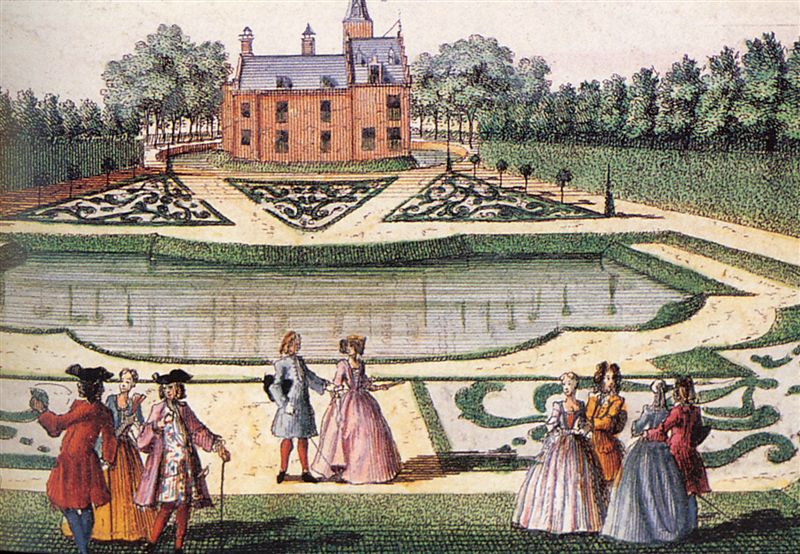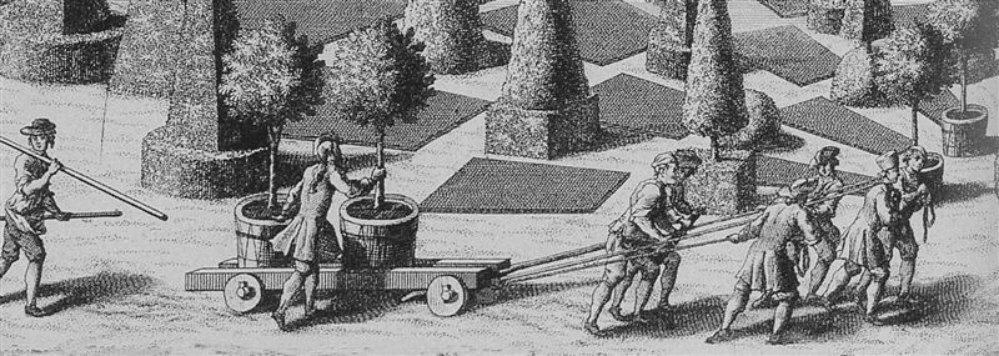
Much has been written on the history of topiary and how the fashion for it has changed over the years. Currently it is receiving a strong revival of interest as garden designers view it as an integral part of the structure of many modern gardens and as an art form, in its own right.
The history of topiary is inextricably linked to the discovery and use of Buxus (Box) and Taxus (Yew) and the chronology of this development has been summarised into the historical summary shown below.
Chronology
7,000 BC
Buxus growing in England UK – pollen grains discovered dating to this time – destroyed during Glacial epoch
4,000 BC
Egyptians clipped box hedges in their gardens
800 BC
In the tomb of King Midas a table made from the wood of Buxus was discovered in 1951
300 BC
Greek horticulturist Theophrastus recognised the virtues of Buxus
100 BC
Rome – In the reign of Emperor Augustus many villas were planted with Buxus hedging and Topiary
Pliny the Younger created buxus gardens. Pliny the Older documented how to use the wood for making instruments etc.
Romans re-introduced Buxus to England
Dark Ages
Europe returned to topiary through hedges and galleries. One special form was the clipping of trees into tiers (wedding cake)
1494
During the reign of Henry VII, knots or knotts first recorded with clipped box, thrift or cotton lavender, bordering them.
1509 – 1547
During the reign of Henry VIII, individual specimens were cut for Hampton Court Palace. Cones, spheres, running greyhounds, deer, bears, urns, vases and boats, mostly in cypress (Cupressus) after the first Italian examples, but it wasn’t reliably hardy
| 1549 |
Parterre – first used in France then used in England from 1639 which may have been influenced by Queen Henrietta-Maria wife of Charles 1.
1603 – 1625
Clipping seems originally to have been done with very sharp but small knives. By 1606, during the reign of James 1, shears similar to those used today were in use.
1652
USA – Nathaniel Sylvester believed to have planted the first Buxus sempervirens at his Long Island home
1660 – 1685
During the reign of Charles II, John Evelyn writing in 1662, claimed to be the first to bring yew into fashion.
1700
By the early 18th Century, several nurseries in Great Britain were producing already formed topiary specimens in containers, and some of their original creations are almost certainly still be to be seen at Levens Hall in Cumbria.
1716 – 1783
Lancelot Brown (known as Capability Brown), renowned for natural landscape movement, was responsible for the removal of much formal box hedging.
1720c
Ha Ha – Sunken boundary – thought to be first created by Charles Bridgeman (1690 – 1738), instigator of the naturalistic landscape movement which caused the destruction of many formal parterre and topiary gardens
1850c
The latter part of the 19 th century saw a vast influx of plants from South and Central America and South Africa, usually tender perennials which had to be over wintered and bedded out in late spring. This led to a return to the knot garden and parterre, with their clipped box edging and clipped cotton lavender, sometimes referred to as carpet bedding.
1854 – 1933
Harold Ainsworth Peto – originally an architect who sold his practice and his contract stated that he was not allowed to practise architecture for a period of 15 years. He became an interior and garden designer specialising in Italianate gardens – Iford Manor, Bradford-upon-Avon.
1869 – 1944
Edwin Lutyens – architect and a former pupil for one year of Harold Peto. Created many gardens in partnership with Gertude Jekyll.
1913
erbert J. Cutbush, a nurseryman, also specialising in topiary. Exhibited Cutbush’s Cut Bushes at flower shows around the country and a display of Topiary at the present site of RHS Chelsea Flower Show 1913 – an arrangement of topiary including exotic birds and animals set down on grass.
| 1925 |
Nathaniel Lloyd (Father of Christopher Lloyd, Great Dixter.) – influenced by Lutyens – first published a book entitled ‘Garden Craftsmanship in Yew and Box’
Mid-late 20th Century
Emergence of great garden designers and buxus/topiary specialists; legendary names such as Jacques Wirtz (Belgium), Piet Oudolf (Holland), Rosemary Verey, Elizabeth Braimbridge, Allain Provost, and modern designers and Chelsea Gold winners, Tom Stuart-Smith, John Moreland and Arne Maynard, to name just a few.
1990c
Cleve West, garden designer – modern sculptural topiary
Compilation by James Crebbin Bailey of www.topiaryarts.com

